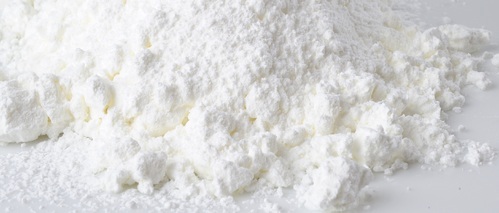Nano-zinc oxide – a new functional fine inorganic chemical material

Nano-zinc oxide is a new type of functional fine inorganic chemical material, which has the characteristics of cheap and easy to obtain raw materials, high melting point, good thermal stability, good electromechanical coupling, good luminescence performance, antibacterial performance, catalytic performance and excellent ultraviolet shielding performance. , widely used in antibacterial additives, catalysts, rubber, dyes, inks, coatings, glass, piezoelectric ceramics, optoelectronics and household chemicals and other fields.
Nano-zinc oxide has good dispersibility, loose and porous, good fluidity, easy to disperse during smelting, and small heat generation of the rubber compound. As a vulcanization activator, the compound added to the target product has stronger activity, improving the microstructure of vulcanized rubber and improving the quality of rubber products. Finish, mechanical strength, tear strength, thermal oxidation resistance, and has the advantages of anti-aging, anti-friction and fire, prolonging service life, etc. When the dosage is 30-50% of ordinary zinc oxide, it can make the rubber tire side rubber anti-folding The performance is increased from 100,000 times to 500,000 times, which can effectively reduce the production cost of enterprises.
2. Ceramic crystallizer
Nano-zinc oxide has nano-effect, small particle size, large specific surface area, and has higher chemical activity than ordinary zinc oxide, which can significantly reduce the sintering and densification degree of the material, save energy, and make the composition of ceramic materials dense and uniform. , to improve the performance of ceramic materials. Due to its volume effect and high dispersing ability, it can be used directly without processing and grinding. Compared with ordinary zinc oxide, its dosage can be reduced by 30%-50%. The sintering temperature of ceramic products is 40-60℃ lower than that of ordinary zinc oxide. It can also make ceramic products have antibacterial and self-cleaning functions.
3. Antioxidant of lubricating oil or grease
Nano-zinc oxide has strong chemical activity and can capture free radicals, thereby destroying the free radical chain reaction. At the same time, nano-zinc oxide is an amphoteric oxide, which can neutralize the acid accumulated on the hydrocarbon chain of the lubricating oil over time, which can prolong the service life of the lubricating oil.
4. UV absorber
Nano-zinc oxide can absorb ultraviolet rays and generate electronic transitions, thereby absorbing and blocking medium-wave ultraviolet (UVB) and long-wave ultraviolet (UVA). Due to the small particle size of nano-zinc oxide, the ultraviolet absorption rate per unit addition amount is greatly improved. Nano-zinc oxide is an inorganic metal oxide, which can maintain long-term stability without degradation, thus ensuring long-term stability and effectiveness of its ultraviolet shielding effect. This product is suitable for environments with strong ultraviolet radiation, and can be used in wooden furniture protective coatings, resins, plastics and rubbers, as well as cosmetics and other products.
5. Anti-mold and bacteriostatic agent
Nano-zinc oxide is a self-activating semiconductor material. Under the irradiation of ultraviolet light and visible light, it will decompose freely moving electrons and leave positive electron holes at the same time. Holes can react with oxygen and water on the surface of zinc oxide to generate hydroxyl radicals, reactive oxygen species, etc., thus causing a series of biological reactions. It can effectively oxidize and degrade biomass, so as to play the role of anti-mildew and antibacterial. Due to the nano-effect of nano-zinc oxide, its specific surface area is significantly increased, its photocatalytic oxidation activity is higher, and it has more efficient antibacterial, antibacterial, and antifungal properties. . It can be applied to antibacterial and anti-mildew of coatings, sealants, plastics, rubber, and textile products.













